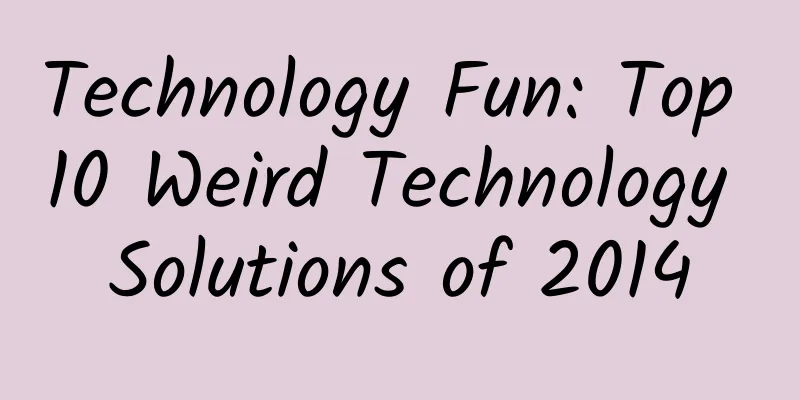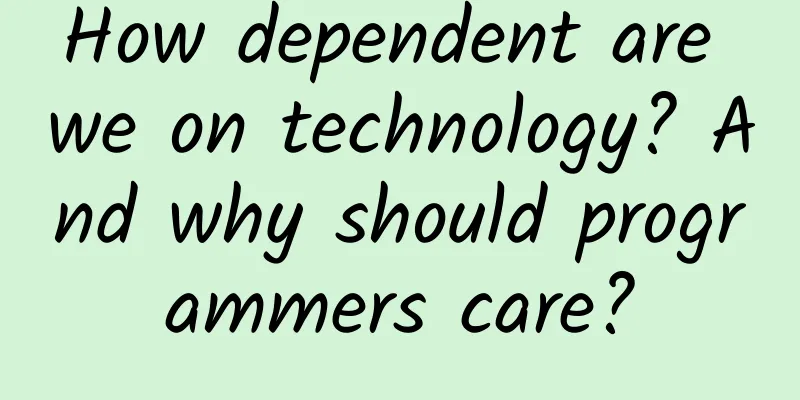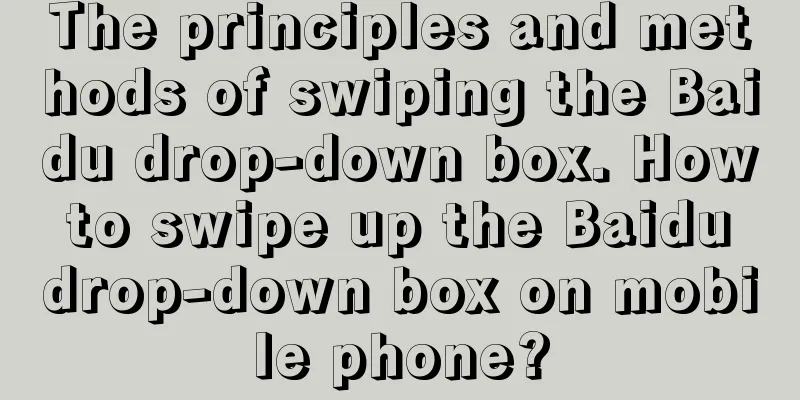Technology Fun: Top 10 Weird Technology Solutions of 2014

|
[51CTO Translation] Cyber telepathy, cooking AI, crime drones - the technology field was full of unexpected surprises this year. Technology Fun: 2014's Top Ten Weird Technology Solutions Nowadays, new and even weird things in the field of high technology can be said to come and go, and they always become the subject of headlines in various media in a short time. Undoubtedly, these endless reports and puzzling contents will only make ordinary people regard technology developers as extremists or even crazy people who are only focused on vague goals and are unwilling to keep their feet on the ground. This phenomenon has become more and more common in recent years with the widespread popularization of technological achievements in life and the diversification and even flooding of popular culture. In 2014, a large number of slightly unconventional technical solutions were reported in the mainstream media as "anecdotes". But for the practitioners who really started to promote these strange technical projects, it was also a very good year. Emerging technologies seem to act a bit recklessly when it comes to topics like these. They develop rapidly in areas we least expected, creating a state of cognitive dissonance in a short period of time. In today's article, we will take a look at the top ten weird technology plans for 2014, including network telepathy, artificial intelligence for part-time jobs, and drone crime. Now, please join us on this wonderful journey... IBM creates AI cooking chef With the release of Transcendence, starring Johnny Depp, former Jeopardy champion Watson translating Twitter and showing off its first machine learning API, the continued development of artificial intelligence and cognitive computing has been the headlines in the technology world in 2014. Earlier this year, IBM launched another cognitive computing development project, establishing a partnership with the Institute of Culinary Education to jointly create a cooking AI chef that keeps up with the times. Designed with the ability to think, experiment and learn, the computer chef has created recipes such as Belgian bacon pudding, Swiss-Thai asparagus quiche and the fascinating Austrian chocolate pancake. These foods are prepared by a team of "carbon-based" - that is, human chefs, and distributed to participants of major industry events through the IBM Food Express. For me, the words IBM, Food and Express are really fresh when put together.
When 3D printing meets tattoo needles If you suffer from needle phobia, the medical term for a fear of needles, this may be the scariest tech story of the year. In April 2014, a group of neurotic French design students released a commercial 3D-printing device and added — yes — a tattoo gun to it. Interested friends can click here to watch the video, and you will find that this device can really work well as we expected. A young crazy volunteer put his arm under the tattoo machine, and the computer controlled the needle to automatically carve a pattern on his arm - yes, right at the place where the 3D printer originally outputs the material. If you are interested in making your own tattoo machine, the team has detailed the modification process on the Instructables website, which can be visited here. Fans of the writer Kafka might immediately understand what the students meant by "in exile."
Robots hitchhike in Canada Next, let's talk about the strange story of a robot hitchhiking in Canada. In July this year, two researchers from a Canadian university deployed a hitchBOT on the side of a highway, hoping to test whether the robot could successfully complete the set route. The result was exciting. The robot finally successfully completed the hitchhiking journey across Halifax, Nova Scotia, Victoria and British Columbia. The project is part of a larger research project involving social robotics and human psychology. Using its own LED screen to display ride requests, hitchBOT successfully crossed the Canadian coastline in 21 days, charged by plugging into the car's cigarette lighter port, posted videos to social media, and relied on the kindness of strangers to complete the journey. Of course, as most people consider Canada to be the friendliest country on earth, this experiment may only be able to bear fruit in this land. #p# University builds new city made of smart vehicles More news about robotics: In May, a simulated city in southern Michigan made new headlines. Designed by engineers and robotics researchers at the University of Michigan, the 32-acre simulated city is designed to create an ideal habitat for hundreds of autonomous robots. Well... sort of. This collection of mobile conversion facilities serves as a testing ground for autonomous vehicles, small cars and trucks that can drive themselves. It's just a few dozen miles from the original automotive capital of Detroit, and the simulated metropolis will eventually include a four-lane expressway, merging lanes, traffic lights, railroad crossings and even robot residents who ride bikes and walk.
Criminal drone crashes outside prison Drones may have figured prominently among the most talked-about tech topics of 2014 — and yes, there was a lot of buzz this year, from controversial FAA decisions to live footage from Chernobyl to some fantastic Halloween projects. In July, Lee Correctional Facility, one of the most strict prisons in South Carolina, reported a serious security incident that led to a new potential problem: drone development. It appeared that someone was planning to use a small drone to deliver some contraband—including marijuana, tobacco, and cell phones—over the prison walls. However, the plan was ultimately unsuccessful because the drone crashed into the prison wall and burned up.
Smartphones, the new tool for showing off Sometimes hard science and social science merge in strange ways, and this is best illustrated by a Venn diagram. This past October, researchers from the University of Würzburg in Germany published a report that was both interesting and relatable. According to their findings, men who are single or not in a committed relationship are more likely to buy high-end smartphones than other male groups. The researchers speculate that cell phones themselves have become a dating signal, and expensive models mean that owners have more resources to offer potential mates. "The study suggests that men are particularly willing to engage in conspicuous consumption as part of a short-term dating strategy to attract a mate," the study abstract states. The full report will be published early next year in the prestigious quarterly journal Quantifying the Common Thing.
Scientists test internet telepathy Another bizarre technological achievement of 2014 came from a new online telepathy scheme - seriously, no kidding. In November, researchers at the University of Washington were able to transmit information directly from brain to brain over the Internet, and in tests, participants who sent brain commands were able to make the recipient perform the correct hand movements - the entire process was achieved purely by thinking. In a similar study in August this year, scientists from multiple countries used a neural device connected to the Internet to broadcast the thoughts of a single test subject to receivers around the world. The test subject thought a single word in his mind (such as "hi" or "bye"), and the EEG device detected his thoughts and translated the content into binary code, and finally used transcranial magnetic stimulation technology to transmit the waves to the recipient's brain. #p#
Google Glass app promises brainwave control In a related area of the weird tech theme, an interesting open source application went viral this summer—literally—and aims to give users the power of psychic manipulation. The MindRDR system uses Google Glass in conjunction with a commercially available EEG headset to allow users to access images and text from social media using their brain waves. The skin patch on the headset can locate the specific area of the user's current field of vision. When the display index reaches a threshold, MinRDR will take a picture through the camera on Google Glass and automatically upload it to the online platform we have previously selected. When the news about MindRDR was first revealed in July this year, many technology observers said that this achievement is almost equivalent to giving users psychic power - people can influence the real world through the power of thought. Haha, it seems that our goal of becoming a "Phoenix Girl" has taken a big step forward.
When smartphone chips meet holographic projection Speaking of geek favorites, the new Star Wars trailer has been released nearly 40 years after the first film was released. For the first time, the film has brought the most iconic descriptions in many science fiction novels to life: R2-D2 uses his holographic projection device to show the image of Princess Leia and pleads with Obi-Wan, "You are my only hope." However, over the years, the desire for holographic projection solutions has gradually died down - the reason is simple, the technology that can achieve this effect seems to be farther away from us than the Death Star. But... will we really stop there? In June this year, the Wall Street Journal reported on a low-key but heavily funded technology project aimed at creating a holographic projection chip small enough to be carried on a smartphone. The report even gave video footage as evidence - in the short film, the technology successfully generated a three-dimensional holographic image of a rolling dice.
Letterman appears on stage with holographic music guest Although truly viable holographic image display technology has not yet appeared, we can always get similar good experiences from some companies. In October this year, David Letterman, who frequently appears on TV, brought us his first musical guest who appeared in the form of holographic images: Japanese pop star Hatsune Miku. The technology behind this holographic celebrity is similar to that used to cause a sensation in performances - the most notable example being 2Pac. The image appears to be floating in the air, but it is actually a photoelectric effect projected onto a transparent two-dimensional mapped surface. Hatsune Miku's voice is entirely synthesized from speech samples. In any case, virtual stars have become a regular feature of theaters and stages. Incidentally, the name Hatsune Miku means "the first voice from the future." Get it? Original English text: Weird science: The 10 oddest tech stories of 2014 Nuka-Cola Translation |
>>: Go 1.4 is officially released, officially supports Android
Recommend
iOS8 custom input method tutorial: How to create a third-party input method
iOS8 brings a lot of cool features, one of which ...
How much does it cost to make a Liaoyuan hotel mini program? What is the quotation for making Liaoyuan Hotel Mini Program?
There are two types of Liaoyuan Hotel WeChat appl...
Share a simple side project, easily earn 8000+ per month, and you can get started with zero basic knowledge
I haven’t shared a project for a long time. Today...
Foshan travel mini program development and customization details, what are the tourism WeChat mini programs?
The emergence of mini programs has simplified the...
How to create Douyin store group? Introduction to the operation method of Douyin store group without source of goods
Since Douyin launched e-commerce, many friends ha...
Taobao store group refined single category product selection ideas [Video course] (with Xiaoer picture downloader and picture splitter)
Taobao store group refined single category produc...
A 10,000-word article sorting out the product strategy of TikTok social
On Douyin, you can watch short videos for enterta...
Three preparations you need to make before switching to operations
I heard you want to switch operations ? You have ...
3000 words to understand Weibo operation and promotion routines!
Why do I operate Weibo? Because browsing Weibo is...
The success logic of the 200 billion yuan entertainment/education market for the middle-aged and elderly: customer acquisition, operation, and monetization
More and more middle-aged and elderly people are ...
What are the best attributions for app promotion at present?
The App has been developed, the advertising has b...
Analysis of hot-selling cases in Internet operations
The past 2021 was a bit magical, a bit miraculous...
Pinduoduo’s operation and promotion logic!
Before, my understanding of Pinduoduo was still a...
Fake orders are actually an illegal business model (with full text)
Brushing orders is actually an illegal business m...
Is artificial intelligence a threat to human civilization? Let’s take a look at AI safety
[[125155]] Kurzweil has written five books on art...









